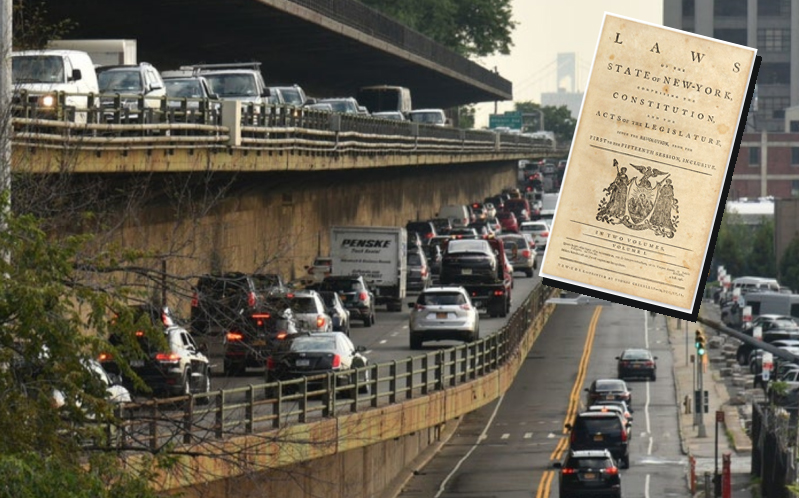New York City residents voted overwhelmingly on Tuesday night in favor of Proposition 2 — a contentious ballot proposal that doesn’t read particularly controversial: “Each person shall have a right to clean air and water, and a healthful environment" — but not everyone, and not everywhere.
According to a new map of the city's lopsided 82-to-18 support for the referendum, there are small pockets of the city where people don’t actually care whether their neighbors have access to clean air or water, and unsurprisingly, they're where you'd expect — where car-centric pols rule, where unprotected bike lanes lead to nowhere, and where Citi Bike is non-existent.
Check out the map of the New York City results created by Zhi Keng He of BetaNYC, (Statewide, the referendum passed with 69 percent of the vote.)
The final city vote total was 675,675 votes in favor (82.13 percent) vs. 147,044 votes opposed (17.87 percent). He's map shows where support was greatest — such as in communities that have suffered disproportionately from respiratory illnesses stemming from highways bisecting their communities.
The referendum will now give power to residents of the Empire State to stop the environmental harms caused by the gas-guzzling cars and trucks that roll through their neighborhoods, said one advocate.
“The Environmental Rights movement in New York was built out from communities facing crises that threatened their health and lives with polluted air and water," said Peter Iwanowicz, executive director of Environmental Advocates NY. "Their plight and the fundamental values laid out in the amendment clearly resonated with New Yorkers of all stripes. New Yorkers have once again proved that we all share a common desire for clean air, water, and a healthy environment. Political leaders across the country should take notice.”
Jenny Veloz, community organizer at New York Lawyers for the Public Interest, called Prop 2 "an additional legal tool for historically overburdened environmental justice communities fighting to breathe easier.
"Access to clean air and water should not be determined by someone’s ZIP code," she added.
Perhaps clean air and water shouldn’t be determined by someone’s ZIP code, but some think it should.
Several city neighborhoods did indeed vote against the proposal, including in the Hasidic and Orthodox Jewish neighborhoods of Williamsburg, Borough Park, and Midwood in Brooklyn, and Kew Gardens in Queens. And other car-centric neighborhoods — though not all — did not vote as decisively in favor of the amendment as the rest of the city, including in Dyker Heights, Bay Ridge, Sheepshead Bay, and Gerritsen Beach in Brooklyn, and in parts of Maspeth and Middle Village — ironically sandwiched on either side of the Long Island Expressway — and Whitestone in Queens.
The majority of Manhattan and the Bronx overwhelmingly voted in favor of the proposal, except for parts of Throggs Neck in the Bronx — an area that's more than 57 percent White, compared to just 8.9 percent in the whole borough, according to census data.
And on Staten Island, the opposite was true compared to the other four boroughs — the majority of Rock residents supported the proposal, but just around 50-to-60 percent, according to the map.
Some opponents of the measure worried it could have an unintended NIMBY-effect by leveraging naysayers to file lawsuits that would stop much-needed transportation and other development projects). Nonetheless, it’s now part of the State Constitution and will be up to the courts on how to adjudicate it.






